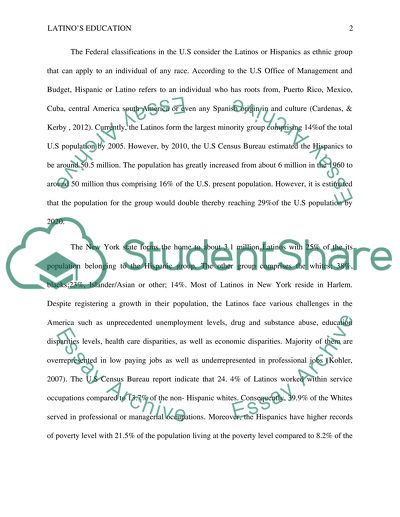Cite this document
(Latino's Educational Level Status in New York City Coursework, n.d.)
Latino's Educational Level Status in New York City Coursework. Retrieved from https://studentshare.org/social-science/1642866-latinos-educational-level-status-in-the-us-particularly-in-new-york-city
Latino's Educational Level Status in New York City Coursework. Retrieved from https://studentshare.org/social-science/1642866-latinos-educational-level-status-in-the-us-particularly-in-new-york-city
(Latino'S Educational Level Status in New York City Coursework)
Latino'S Educational Level Status in New York City Coursework. https://studentshare.org/social-science/1642866-latinos-educational-level-status-in-the-us-particularly-in-new-york-city.
Latino'S Educational Level Status in New York City Coursework. https://studentshare.org/social-science/1642866-latinos-educational-level-status-in-the-us-particularly-in-new-york-city.
“Latino'S Educational Level Status in New York City Coursework”, n.d. https://studentshare.org/social-science/1642866-latinos-educational-level-status-in-the-us-particularly-in-new-york-city.


